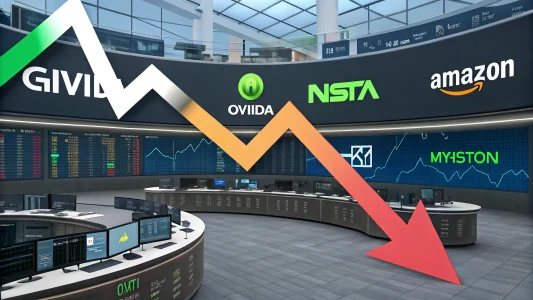I am Taylor Sohns, CEO of LifeGoal Wealth Advisors, a CIMA and CFP. I spend my days studying how capital moves. One pattern stands out right now. The ultra-wealthy continue to invest in sports and entertainment. That is not about hype. It is about math, behavior, and time.
The core idea is simple. Sports franchises and media assets have shown strong returns, low correlation to traditional markets, and steady cash flow. These traits are rare in one package. They explain why serious investors chase exposure here. I will break down the five key points I use to describe this trend and explain why they matter to anyone considering diversification.
“Sexy equals stupid when investing, but here’s your exception. The ultra-rich don’t do stupid and they’re piling into sports and entertainment.”
Table of Contents
ToggleThe Leagues That Draw Serious Capital
When people say “sports investing,” they often picture one local team. In reality, large families, private funds, and institutions look across the major leagues. The focus spans five core properties: the NFL, NBA, MLB, NHL, and Premier League soccer. These are global brands with real pricing power.
The appeal starts with the fan base. Each league reaches millions of engaged followers who return season after season. That loyalty is reflected in ticket sales, merchandising, and high-value media contracts. It also appears in team valuations, which tend to rise over extended periods.
Another draw is structure. These leagues are franchises inside closed systems. Supply of teams is fixed or slow to change. Scarcity supports pricing. It also limits the supply of investable assets, which can fuel competition among buyers.
View this post on Instagram
Performance That Stacks Up
There is a history of returns outpacing broad equity indexes. A sports index tracking team valuations and cash flows has posted gains above the stock market over the long run. That speaks to stable demand and revenue growth. It also reflects strong negotiating power against broadcasters and sponsors.
I do not count on outperformance in every period. Sports, like any asset, can face slowdowns. The key is the trend. As streaming expands and live events become more valuable to advertisers, media rights help pull the index higher. That has happened across cycles. It is one reason big money keeps flowing into this corner of the market.
“Sports delivered positive returns in 2008 while stocks got demolished.
This detail matters. During a deep market slide, sports held value and even gained. That is a rare trait. It suggests unique drivers that do not move with GDP or interest rates to the same degree as public equities.
Three Revenue Streams That Build Resilience
Each major franchise draws income from three reliable sources. They work together to smooth cash flow and reduce the impact of any one weak link.
- Game Day: Tickets, parking, concessions, and in-stadium sales make up the heartbeat of a season. This revenue is driven by attendance but benefits from dynamic pricing and loyalty programs.
- Sponsorship: Brands pay for visibility on jerseys, arenas, and digital content. These deals are typically contracted, often for multi-year periods, and scale with audience size.
- Media Rights: Broadcast and streaming contracts are the cornerstone of the industry. They bring scale and predictability and often include escalators over time.
It is the combination that counts. If attendance dips for a stretch, media checks still clear. If a sponsor pauses, game day income still fills stadiums. The three legs give teams and leagues more stability than many entertainment assets.
Sports Are a Cultural Constant
We can reduce this to numbers, but sports are a part of daily life. Families often plan their weekends around youth leagues and professional games. Communities rally at stadiums. That rhythm does not fade when a market wobbles.
I saw that on a simple weekend. Kids’ soccer in the morning. Flag football at noon. Basketball in the afternoon. Everywhere I looked, people were wearing team gear and checking scores. It felt like a cultural circus. That steady engagement is the real engine behind the numbers.
Time also works in favor of the leagues. Rule changes, tech upgrades, and streaming platforms come and go. The habit of gathering for games stays. That habit supports stable demand for live rights and sponsorships. It gives owners leverage over long cycles.
Why Diversification Drives Ultra-High-Net-Worth Demand
Wealthy investors look for assets that behave differently from stocks and bonds. Most of them already have heavy public market exposure. They want something that can retain its value when other holdings decline. Sports have checked that box.
The reason is correlation. The drivers of sports cash flow do not align with those of the S&P 500. Fans do not stop watching because of a rate hike. Advertisers still pursue live audiences because live games are less likely to be skipped. Media firms pay for rights because sports keep subscribers. These forces are distinct.
That is why sports posted gains in 2008. It is also why valuations continued to rise during other shocks. The draw is not just a return; it’s a new beginning. It is a return that moves on a different path. That can lower total portfolio volatility when blended with traditional assets.
A Valuation Snapshot: The Chicago Bears
Team sales and minority stakes give complex data. A recent example stands out. A slice of the Chicago Bears moved at a price that implied a $9 billion valuation. The same team was valued at $6 billion a year earlier. That is a large jump in a short time.
It tells us two things. First, demand for rare assets is strong. Second, buyers believe future cash flows can support higher prices. Media deals, betting partnerships, stadium upgrades, and global merchandising all play a part. Each adds a layer that can lift total enterprise value.
I do not assume every team will see the same pace. Markets can cool. But the direction, over long periods, has been up. That aligns with the track record of the big leagues.
Access Paths for Investors
Full team ownership is out of reach for most investors. Still, there are ways to gain exposure to sports and entertainment cash flows. The structure and terms vary, and due diligence is key. Here are common paths and the trade-offs to consider.
- Minority Team Stakes: Often illiquid, with governance limits. Potential access to upside if league valuations rise.
- Sports Funds or Holding Companies: Professional management across teams, media rights, and related assets. Fees and lockups apply.
- Media and Rights Aggregators: Exposure to content owners or distributors that rely on live sports. Equity risk is public-market driven.
- Venue and Infrastructure: Real estate tied to stadiums and entertainment districts—returns tied to leases and events.
- Sponsorship and Merchandising Partners: Brands with deep sports ties. Performance depends on consumer demand and execution.
Each path carries a different risk profile. Liquidity, fees, and control vary widely. Investors should tailor their approach to their time horizon and tolerance for price fluctuations.
Risk Factors to Weigh
Every asset class has risk. Sports are no different. Smart capital respects what can go wrong and plans ahead.
Liquidity comes first. Private stakes can be hard to sell. Buyers are limited, and approvals can take time. That means sizing positions with patience in mind.
Valuation cycles matter too. Hot markets can drive prices above fundamental levels. If media growth slows or a league stumbles, returns can lag. That is why investors seek diversified exposure within the space, rather than a single bet.
Regulatory and technology changes can shift revenue. Sports betting rules, streaming economics, and regional sports network models can move cash flows. Teams and leagues that adapt keep their edge. Those who resist change may feel pressure.
Lastly, operating performance does not always equal investment performance. A winning season may drive ticket sales. However, long-term returns are more heavily influenced by media deals, sponsorship health, and league-wide outcomes.
How I Think About Portfolio Fit
I view sports as a satellite allocation around a core of public stocks and bonds. The aim is not to replace those anchors. It is to add a differentiated return stream that can improve the overall mix.
Position sizing should reflect the illiquidity and concentration of certain assets. A small weight can still move the needle if the correlation benefit is real. Rebalancing rules help keep enthusiasm in check when valuations rise fast.
Due diligence is the line between smart and reckless. I look for governance rights, clear cash flow waterfalls, and conservative underwriting of media revenue. I also look for diversified exposure to multiple leagues and assets. That reduces single-event risk.
Key Points at a Glance
- The NFL, NBA, MLB, NHL, and Premier League are the most sought-after properties.
- Historical returns for a sports index have consistently outpaced those of broad equities over extended periods.
- Three revenue streams—game day, sponsorship, and media rights—create stability.
- Sports held up in 2008, showing low correlation to stocks when it mattered most.
- Recent deals, such as the Chicago Bears’ valuation jump from $6 billion to $9 billion, signal ongoing demand.
The Human Factor: Why Demand Endures
Behind the numbers is habit. Families plan around games. Friends bond over teams. Cities take pride in winning seasons. That constant creates a floor under demand. It also provides leagues with a platform to expand their global reach and digital products.
Live sports still cut through the noise for advertisers. Fans tune in at a set time. They watch together and react in real time. That behavior is rare in modern media. It is why companies pay to be part of the action.
This is also why the ultra-wealthy keep buying. They look for assets anchored in real behavior, not just a model. Sports deliver that. The returns come from millions of small, repeat choices made by fans and brands every week.
That is not “sexy.” It is steady. And steady can be powerful.
I began with a warning about chasing trends. Sports and entertainment are the exceptions because demand is durable, revenue is diversified, and the asset supply is limited. When those three meet, value compounds over time.
If you study the space with care, size your exposure correctly, and maintain a long-term view, sports can play a meaningful role in a well-built portfolio.

















